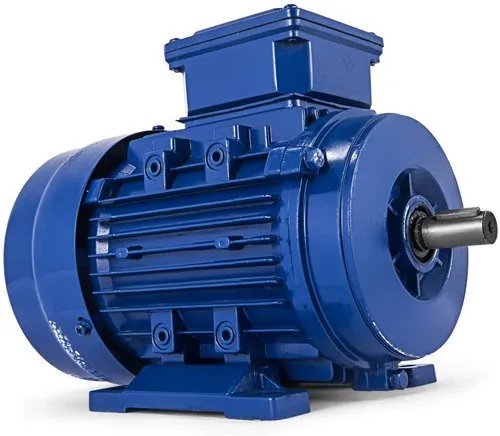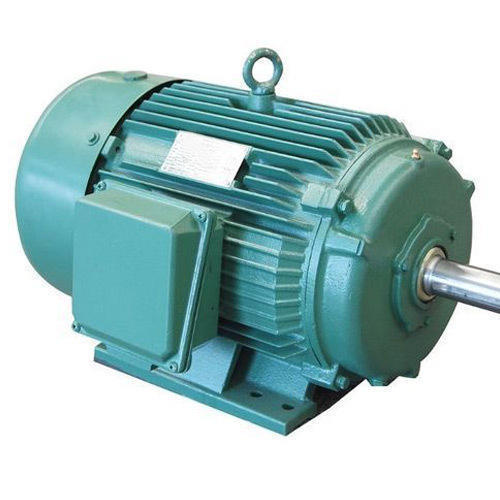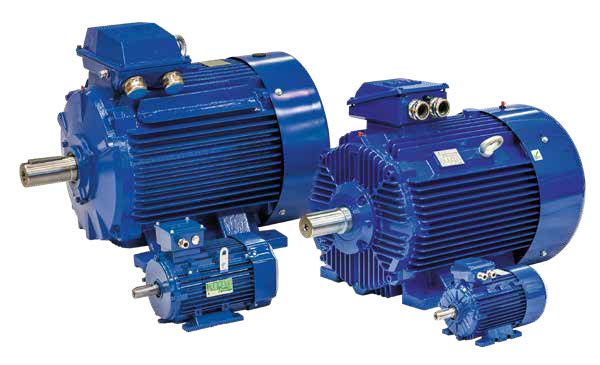Product Description
YBX3 series high efficiency flameproof three-phase asynchronous motor is our upgraded explosion-proof motor basic series from YB2 series,the series motor has the advantages of small volume,little weight,beautiful apperance,reliable operation,long service life,excellent performance as well as convenient installation,operation and maintenance. The series motor’s power level,installation dimensions comply with IEC standard,with coincident corresponding relationship with German standard DIN42673,It is conducive for the export equipment matching and introduction of spare parts for equipments.
The stator windings are of Class F insulation and ensures a large margin of safety in temperature rise and long service life.A cylindrical shaft extension is equipped on motors,which is driven by coupling spur gearing. The stator windings are wound with polyester enamel round wire of high strength and then treated with the progress of vacuum-pressure impregnation,to make them become a CHINAMFG integral.Therefore,the winding insulation is excellent in electrical and mechanicalproperties,moisture resistance and thermal stability. The rotors are of cast-aluminum,and dynamically balanced to make the motor operate smoothly with small vibration and low noise,the stator and rotor cores are laminated with high-class electrical steel sheet with high permeability and low loss,thus makes the motors possess low loss and high efficiency.
Frame size(mm): 80 to 355
Output(kw): 0.37 to 315
Efficiency class: IE3
Ex mark: ExdI, ExdIIAT4, ExdIIBT4, ExdIICT4
| Induction Electric Motors Type YBX3 | ||||||||||||||
| Height of an axis, mm | Power, kW at frequency of rotation | The size of a shaft, mm at frequency of rotation | The connecting sizes, mm | |||||||||||
| 2р=2 | 2р=4 | 2р=6 | 2р=8 | 2p=2 | others | |||||||||
| H | 3000 | 1500 | 1000 | 750 | DxE | B | C | A | K | M | nxS | P | N | |
| min -1 | min -1 | min -1 | min -1 | |||||||||||
| 80M1 | 0.75 | 0.55 | 0.37 | x | 19×40 | 100 | 50 | 125 | 10 | 165 | 4×12 | 200 | 130 | |
| 80M2 | 1.1 | 0.75 | 0.55 | x | ||||||||||
| 90S | 1.5 | 1.1 | 0.75 | x | 24×50 | 100 | 56 | 140 | 10 | 165 | 4×12 | 200 | 130 | |
| 90L | 2.2 | 1.5 | 1.1 | x | 125 | |||||||||
| 100L | 3 | 2.2/3 | 1.5 | 1.1 | 28×60 | 140 | 63 | 160 | 12 | 215 | 4×14.5 | 250 | 180 | |
| 112М | 4 | 4 | 2.2 | 1.5 | 28×60 | 140 | 70 | 190 | 12 | 215 | 4×14.5 | 250 | 180 | |
| 132S | 5.5/7.5 | 5.5 | 3 | 2.2 | 38×80 | 140 | 89 | 216 | 12 | 265 | 4×14.5 | 300 | 230 | |
| 132М | x | 7.5 | 4/5.5 | 3 | 178 | |||||||||
| 160M | 11/15 | 11 | 7.5 | 4/5.5 | 42×110 | 210 | 108 | 254 | 15 | 300 | 4×18.5 | 350 | 250 | |
| 160L | 18.5 | 15 | 11 | 7.5 | 254 | |||||||||
| 180M | 22 | 18.5 | х | х | 48×110 | 241 | 121 | 279 | 15 | 300 | 4×18.5 | 350 | 250 | |
| 180L | х | 22 | 15 | 11 | 279 | |||||||||
| 200L | 30/37 | 30 | 18.5/22 | 15 | 55×110 | 305 | 133 | 318 | 19 | 350 | 4×18.5 | 400 | 300 | |
| 225S | х | 37 | x | 18.5 | 55×110 | 60×140 | 286 | 149 | 356 | 19 | 400 | 8×18.5 | 450 | 350 |
| 225М | 45 | 45 | 30 | 22 | 311 | |||||||||
| 250М | 55 | 55 | 37 | 30 | 60×140 | 65×140 | 349 | 168 | 406 | 24 | 500 | 8×18.5 | 550 | 450 |
| 280S | 75 | 75 | 45 | 37 | 65×140 | 75×140 | 368 | 190 | 457 | 24 | 500 | 8×18.5 | 550 | 450 |
| 280М | 90 | 90 | 55 | 45 | 419 | |||||||||
| 315S | 110 | 110 | 75 | 55 | 65×140 | 80×170 | 406 | 216 | 508 | 28 | 600 | 8×24 | 660 | 550 |
| 315М | 132 | 132 | 90 | 75 | 457 | |||||||||
| 315L | 160/200 | 160/200 | 110/132 | 90/110 | 508 | |||||||||
| 355S | 185/200 | 185/200 | 160 | 132 | 75×140 | 95×170 | 500 | 254 | 610 | 28 | 740 | 8×24 | 800 | 680 |
| 355M | 220/250 | 220/250 | 185/200 | 160 | 560 | |||||||||
| 355L | 280/315 | 280/315 | 220/250 | 185/200 | 630 | |||||||||
*****************************************
our production range:
we are good at AC motor with IEC/NEMA/GOST standard motor as below:
IEC—-frame size:80-560, 0.12kw to 2000kw with 220~1100V, general purpose;
—-frame size:80-560, 0.12kw to 2000kw with 220~1100V,Explosion proof ExdIIBT4+CT4;
IEC—-frame size:355-900, 250kw to 5000kw with 3000~11000V,general purpose;
—-frame size:355-900, 250kw to 5000kw with 3000~11000V,Explosion proof ExdIIBT4+CT4 ;
NEMA—-frame size: 143T-449T, 1hp to 300hp with 230-690V, general purpose;
—-frame size: 143T-449T, 1hp to 300hp with 230-690V, Explosion proof ExdIIBT4;
GOST—-frame size: 63-560, 0.12kw to 2000kw with 220~1100V, general purpose;
—-frame size: 63-450, 0.12kw to 1500kw with 220~1100V, Explosion proof ExdIIBT4;
GOST—-frame size: 355-560, 185kw to 2500kw with 3000~11000V, general purpose;
—-frame size: 355-560, 185kw to 2500kw with 3000~11000V,Explosion proof ExdIIBT4;
Certificate: ISO9001/CCC/CE0123/ATEX/CCS/CSA/UL/TUV…
/* March 10, 2571 17:59:20 */!function(){function s(e,r){var a,o={};try{e&&e.split(“,”).forEach(function(e,t){e&&(a=e.match(/(.*?):(.*)$/))&&1
| Application: | Industrial, Power Tools |
|---|---|
| Operating Speed: | Low Speed |
| Number of Stator: | Three-Phase |
| Customization: |
Available
|
|
|---|
.shipping-cost-tm .tm-status-off{background: none;padding:0;color: #1470cc}
| Shipping Cost:
Estimated freight per unit. |
about shipping cost and estimated delivery time. |
|---|
| Payment Method: |
|
|---|---|
|
Initial Payment Full Payment |
| Currency: | US$ |
|---|
| Return&refunds: | You can apply for a refund up to 30 days after receipt of the products. |
|---|

What are the key components of a typical 3-phase motor?
A typical 3-phase motor consists of several key components that work together to convert electrical energy into mechanical energy. Here’s a detailed explanation of the key components of a typical 3-phase motor:
- Stator: The stator is the stationary part of the motor and contains the core, windings, and other structural components. It consists of a laminated iron core with slots where the motor windings are placed. The stator windings are connected to the power supply and create a rotating magnetic field when energized.
- Rotor: The rotor is the rotating part of the motor and is located inside the stator. It consists of a laminated iron core with conductive bars or coils embedded in it. The rotor is designed to rotate within the magnetic field generated by the stator windings. The interaction between the stator’s rotating magnetic field and the rotor’s conductive elements induces currents in the rotor, creating a torque that drives the rotation of the motor.
- Windings: The windings are conductive coils of wire that are wound around the stator slots. In a 3-phase motor, there are typically three sets of windings, each spaced 120 degrees apart. These windings are designed to carry the three-phase alternating current (AC) from the power supply. The arrangement and connection of the windings create a rotating magnetic field in the motor, which interacts with the rotor to produce torque and rotation.
- Power Supply Connections: The motor has terminals or leads for connecting it to the three-phase power supply. The power supply connections are typically labeled as L1, L2, and L3, corresponding to the three phases of the power supply. These connections provide the alternating current required to energize the stator windings and create the rotating magnetic field.
- Bearings: Bearings are used to support the rotor and allow it to rotate smoothly within the stator. The motor typically has two bearings, one at each end of the rotor shaft. These bearings reduce friction and enable the efficient transfer of rotational motion from the rotor to the motor’s load.
- Shaft: The shaft is a cylindrical component that extends from the rotor and serves as the mechanical link between the motor and the load. The shaft transfers the rotational motion generated by the motor to the connected equipment or machinery.
- Housing or Frame: The motor is enclosed in a housing or frame that provides protection and support for the internal components. The housing is typically made of a durable material such as metal or plastic and is designed to withstand the operating conditions of the motor.
- Cooling System: Many 3-phase motors incorporate a cooling system to dissipate heat generated during operation. This may include cooling fins on the motor housing, fan blades attached to the rotor shaft, or a separate cooling fan. Efficient cooling is essential to maintain optimal motor performance and prevent overheating.
These are the key components of a typical 3-phase motor. Each component plays a crucial role in the motor’s operation, from generating the rotating magnetic field to transferring mechanical energy to the load. Understanding these components is essential for troubleshooting, maintenance, and proper operation of 3-phase motors.

How do manufacturers ensure the quality and reliability of 3-phase motors?
Manufacturers employ various measures and processes to ensure the quality and reliability of 3-phase motors. Here’s a detailed explanation of the key practices manufacturers follow:
- Design and Engineering: Manufacturers invest significant effort in the design and engineering phases of motor development. They employ experienced engineers who design the motors to meet specific performance, efficiency, and reliability requirements. Advanced computer-aided design (CAD) software and simulation tools are used to optimize motor designs and ensure compatibility with intended applications.
- Material Selection: High-quality materials are crucial for the durability and performance of 3-phase motors. Manufacturers carefully select materials that can withstand the mechanical stresses, electrical loads, and environmental conditions the motors may encounter. This includes choosing appropriate insulation materials, conductors, bearings, and other components to ensure long-term reliability.
- Manufacturing Processes: Stringent manufacturing processes are implemented to ensure consistent quality and reliability. Manufacturers adhere to industry standards and best practices, such as ISO 9001 certification, to maintain high manufacturing standards. Automated assembly lines, precision machining, and rigorous quality control inspections are employed to minimize variations and defects during production.
- Testing and Quality Control: Thorough testing is performed at various stages of motor production to verify performance, electrical characteristics, and reliability. Manufacturers conduct tests such as insulation resistance testing, high-potential (hipot) testing, vibration testing, temperature rise testing, and load testing. These tests help identify any potential issues and ensure that motors meet or exceed specified standards and performance criteria.
- Quality Assurance Systems: Manufacturers implement robust quality assurance systems to monitor and control the entire manufacturing process. This includes implementing quality management systems (QMS) and continuous improvement methodologies, such as Six Sigma or lean manufacturing, to identify areas for enhancement and minimize defects. Regular audits and inspections are conducted to ensure compliance with quality standards and customer requirements.
- Certifications and Compliance: Reputable manufacturers ensure that their 3-phase motors comply with relevant industry standards and certifications. These can include compliance with standards such as NEMA (National Electrical Manufacturers Association) or IEC (International Electrotechnical Commission), as well as safety certifications like UL (Underwriters Laboratories) or CSA (Canadian Standards Association). Compliance with these standards ensures that the motors meet essential electrical and mechanical safety requirements.
- Reliability Testing: Manufacturers subject 3-phase motors to extensive reliability testing to simulate real-world operating conditions and verify their performance under various stress factors. This includes testing for endurance, temperature cycling, humidity exposure, voltage fluctuations, and other environmental factors that the motors may encounter during their lifespan. Reliability testing helps identify and address any potential issues before the motors reach the market.
- Supplier Qualification: Manufacturers carefully select and qualify their suppliers to ensure the quality and consistency of components used in the motor’s construction. Suppliers are evaluated based on their manufacturing capabilities, quality control processes, and adherence to industry standards. Regular supplier audits and performance evaluations are conducted to maintain the desired level of quality in the supply chain.
- Customer Feedback and Warranty: Manufacturers value customer feedback and utilize it to further improve the quality and reliability of their 3-phase motors. They provide warranties and after-sales support to address any issues that may arise during the motor’s operational lifespan. By actively engaging with customers and addressing their concerns, manufacturers can continuously enhance their products and ensure customer satisfaction.
By following these practices, manufacturers strive to deliver high-quality and reliable 3-phase motors that meet the demanding requirements of various applications. These measures help ensure that the motors perform optimally, have a long lifespan, and provide reliable operation in diverse industrial and commercial settings.

How do 3-phase motors handle variations in load and speed requirements?
3-phase motors are capable of handling variations in load and speed requirements through various control methods. Here’s a detailed explanation of how they handle these variations:
- Load Variations:
- Inherent Torque Characteristics: 3-phase motors are designed to provide high starting torque and continuous torque output, making them suitable for a wide range of load variations. They can handle sudden changes in load without significant impact on motor performance.
- Overload Capacity: 3-phase motors are typically designed with overload capacity to handle temporary increases in load beyond their rated capacity. This overload capacity allows the motor to withstand sudden surges in load without overheating or tripping protective devices.
- Controlled Speed Regulation: By using control devices such as variable frequency drives (VFDs) or adjustable speed drives (ASDs), the speed and torque output of 3-phase motors can be adjusted in real-time to match the load requirements. This ensures efficient motor operation and minimizes energy wastage.
- Motor Protection Features: 3-phase motors often incorporate protective features such as thermal overload protection and current limiters. These features help safeguard the motor against excessive heat or current, which can result from prolonged high-load conditions. They automatically intervene to protect the motor and prevent damage.
- Speed Variations:
- Variable Frequency Drives (VFDs): 3-phase motors can be coupled with VFDs, which allow precise control of motor speed. VFDs adjust the frequency and voltage supplied to the motor, enabling smooth and accurate speed regulation over a wide range. This flexibility in speed control makes 3-phase motors suitable for applications with varying speed requirements.
- Adjustable Speed Drives (ASDs): Similar to VFDs, ASDs provide speed control capabilities for 3-phase motors. They allow users to adjust the motor’s speed and torque output based on specific application needs. ASDs can be used in various industrial processes that require precise speed control, such as conveyor systems, pumps, and fans.
- Pole Changing Motors: Some 3-phase motors, known as pole changing motors, offer the ability to change the number of poles within the motor. This feature allows for speed variations by altering the motor’s synchronous speed. However, pole changing motors are less common compared to VFD or ASD-controlled motors.
Overall, 3-phase motors can handle variations in load and speed requirements through their inherent torque characteristics, overload capacity, and control options such as VFDs and ASDs. These features and control methods allow for efficient motor operation, precise speed regulation, and the ability to adapt to changing load conditions in various industrial applications.


editor by CX 2023-12-18
